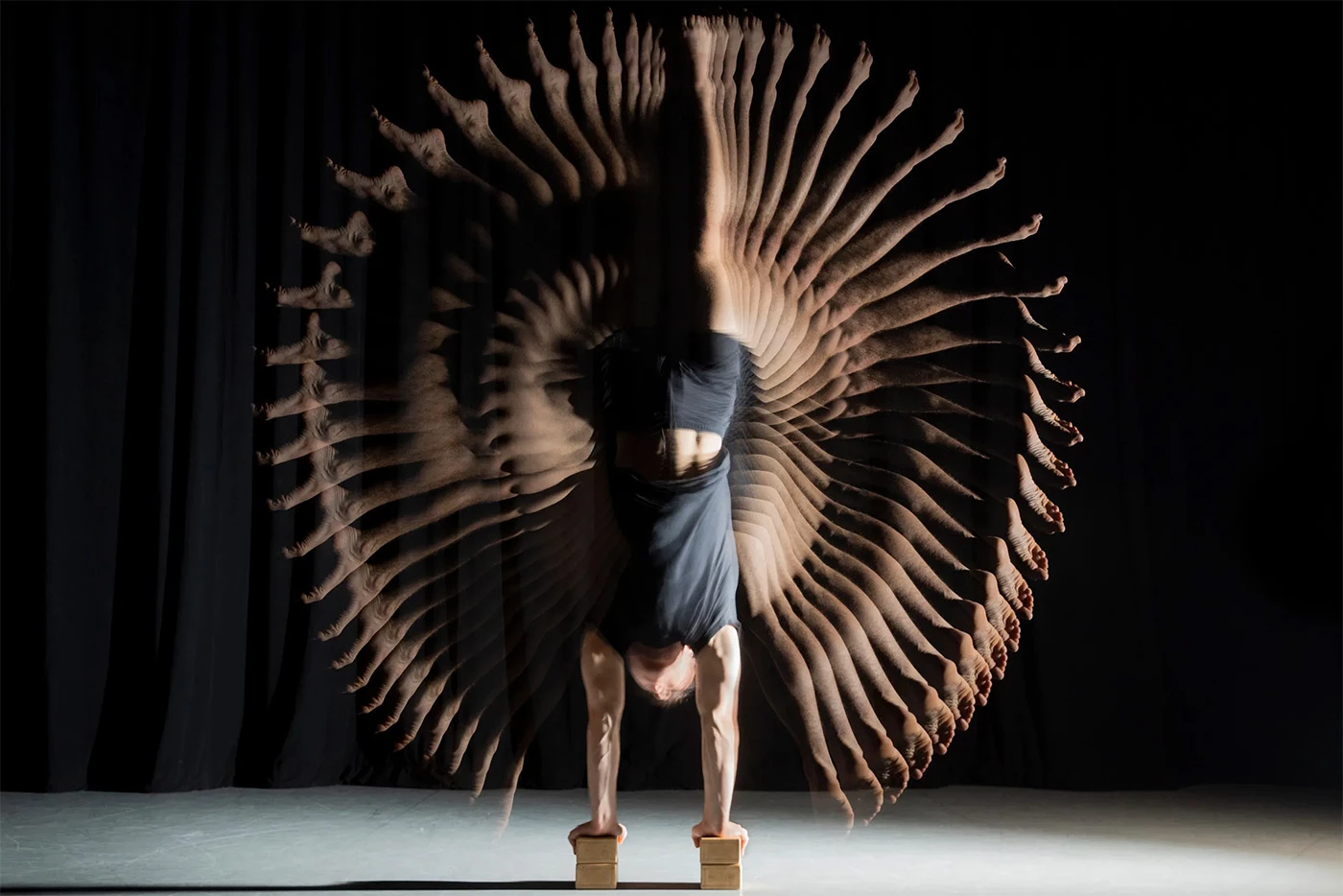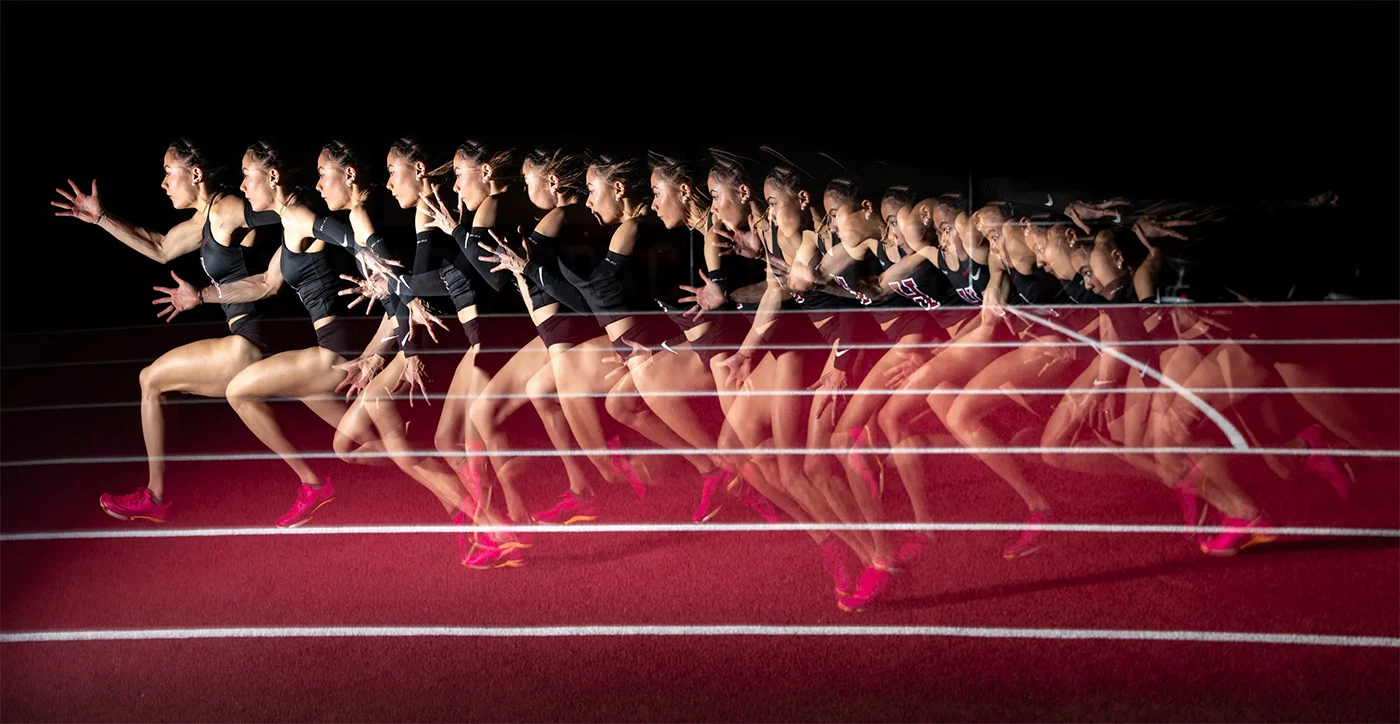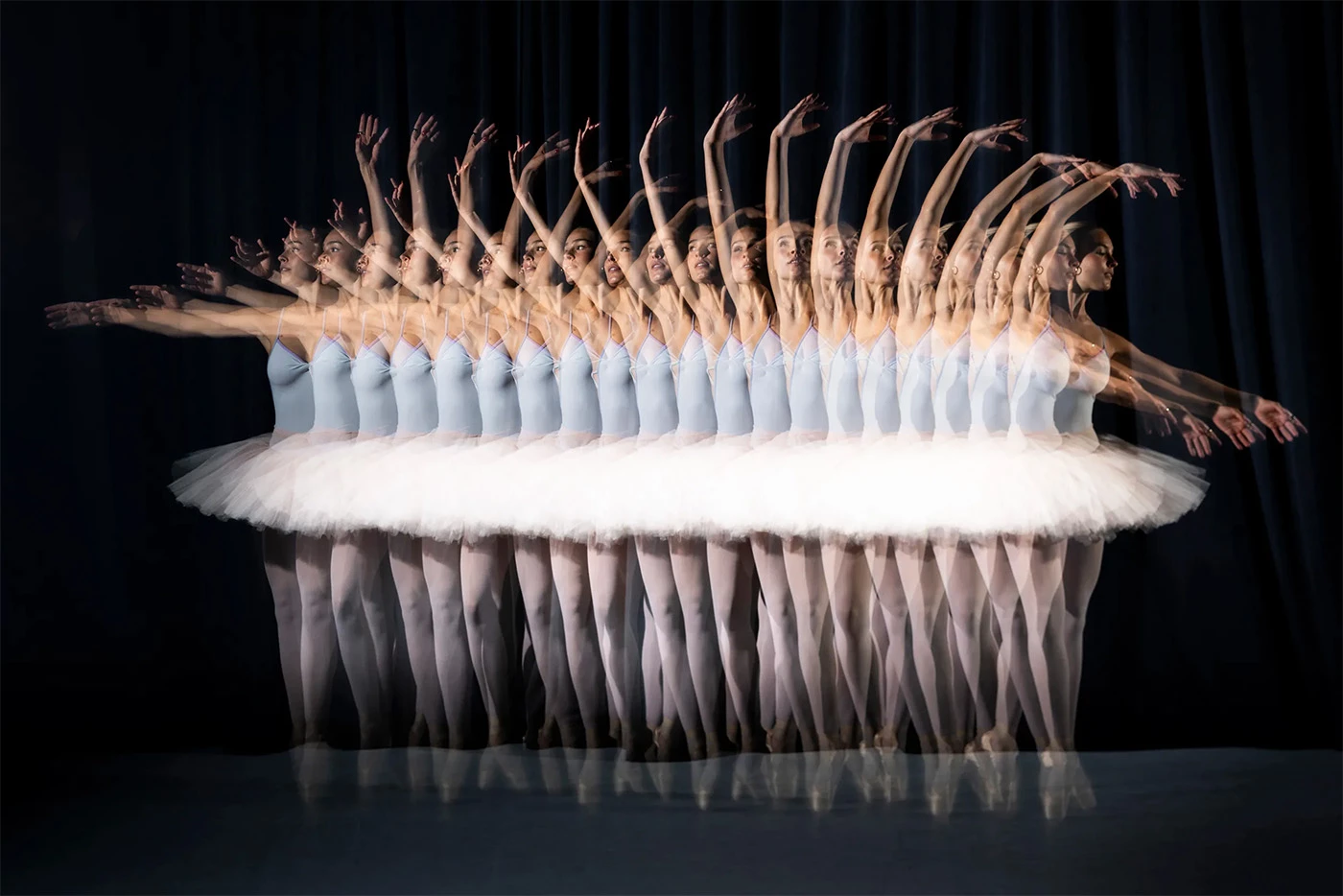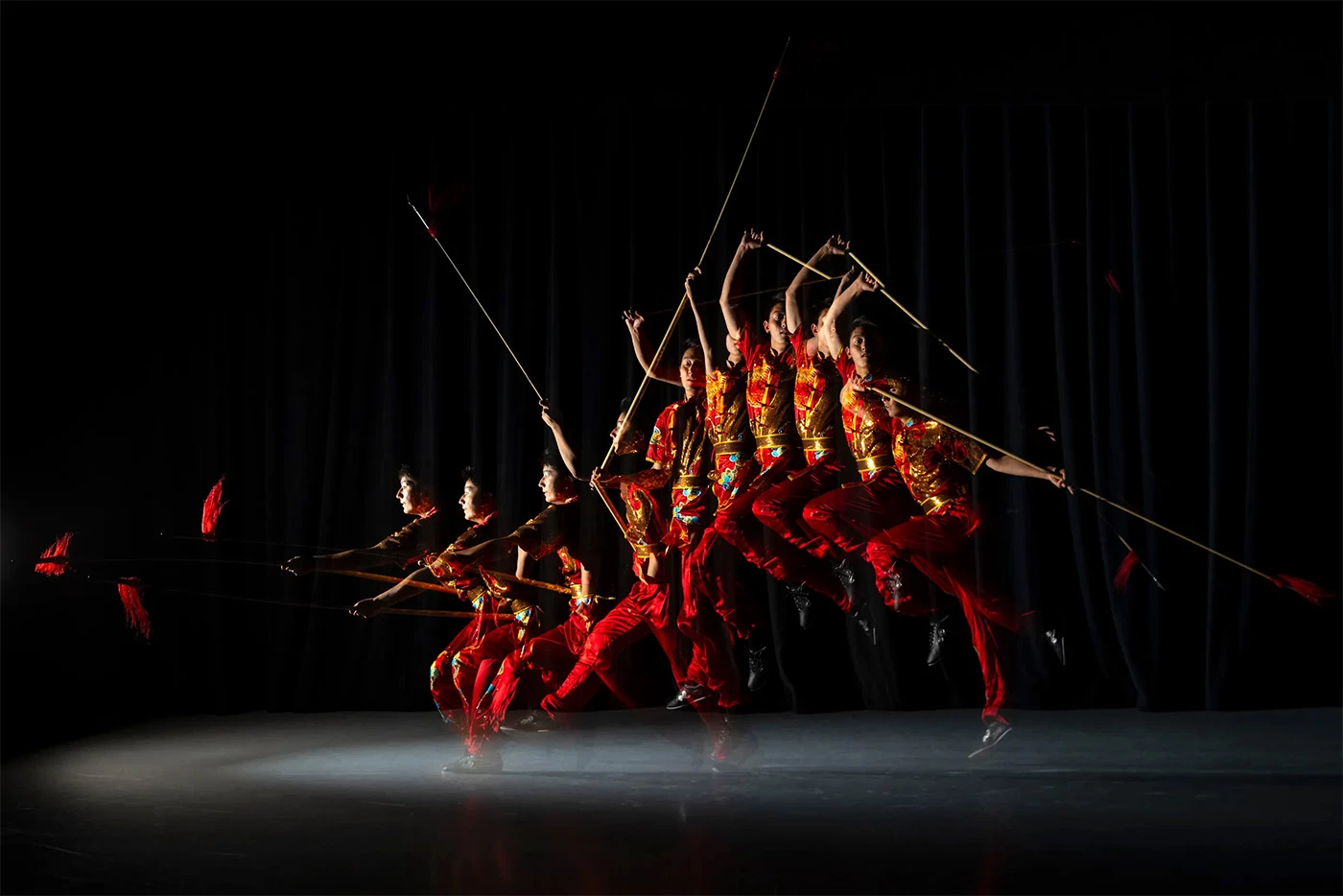We're kicking off this week with a treat for your peepers. Unlike their usual settings, Harvard University staff photographer Niles Singer pointed a camera and a strobe flash at some of the school's athletes and performers as they ran, jumped, and danced in the dark.
Singer had the flash fire multiple times within 1-3 seconds, and captured several instances of each subject in a single frame, making for mesmerizing photos that beautifully depict the complexity of the human body in motion.
This technique, known as stroboscopic photography, requires a bit of technical camera and flash calibration, and also careful choreography for artistic results like Singer's. It's inspired by photographic motion studies that date back to the 1870s, when Eadweard Muybridge experimented with different ways of shooting to study animal locomotion.

Singer's setup involved a camera fixed on a tripod facing a subject ready to execute a short choreographed action, along with a flash pointed in their direction – all in a darkened space.

As the subject performs, Singer's flash fires several times to create multiple instances of the person in the frame – while the camera captures a single long exposure. Tweaking the settings for each shot enabled remarkable results in-camera to be achieved, without the need to stitch multiple images together in Photoshop.

Want to give it a try yourself? Here's a simple tutorial you can follow with any camera that lets you control its shooting settings, a basic remote flash, and a ping-pong ball as a starting point. Once you've got the hang of it, you can dream up far wilder compositions to capture.
Find a few more eye-catching photos, as well as footage of the performers in action at the shoot, over on Harvard's site.
Source: The Harvard Gazette





